How to Rebuild the West
Rome has risen and fallen many times, and her many lives have everything to teach us...
Last week, Evan and I hosted the inaugural INVICTUS retreat in Rome. Over five memorable days, we explored why Rome is called the Eternal City, considering what caused her periods of glory, and how she survived decline.
Above all, we considered Rome through the footsteps of those who made her great, and those who kept her flame alive when she was not. From our top floor apartment between the Colosseum and the Archbasilica of Saint John Lateran, two of Rome’s grandest structures, we set out to discover Rome both chronologically and thematically, with each day dedicated to a specific time period and stage in her life cycles.
At the same time, we immersed ourselves in the everyday life of Rome, crossing the city’s historic quarters largely on foot, and exploring her extraordinarily rich cuisine across many of her most characteristic restaurants.
Today, we reflect on this remarkable adventure, the wonders we experienced, and — most importantly — what the city of Rome can teach us about how to save the West…
Ancient Rome - Birth
The Roman day begins most correctly with two things - the caffè e cornetto, or coffee and croissant, with both coming in numerous varieties. Joining our tables under the vast parasols of Caffe ’800, as the city steadily woke up around us, our own days began with three — caffè, cornetto e conversazione.
On this first day, over a cappuccino and cream-filled cornetto, we considered the words of the Roman historian Titus Livy, who at the beginning of his magnum opus, a vast history of royal and republican Rome known as Ab Urbe Condita (‘From the Founding of the City’), wrote a powerful justification for studying history, and that of Rome in particular, which strikes particularly close to home in the 21st century West:
“There is this exceptionally beneficial and fruitful advantage to be derived from the study of the past, that you see, set in the clear light of historical truth, examples of every possible type. From these you may select for yourself and your country what to imitate, and also what, as being mischievous in its inception and disastrous in its issues, you are to avoid. Unless, however, I am misled by affection for my undertaking, there has never existed any commonwealth greater in power, with a purer morality, or more fertile in good examples; or any state in which avarice and luxury have been so late in making their inroads, or poverty and frugality so highly and continuously honoured, showing so clearly that the less wealth men possessed the less they coveted. In these latter years wealth has brought avarice in its train, and the unlimited command of pleasure has created in men a passion for ruining themselves and everything else through self-indulgence and licentiousness.”
Livy, Ab Urbe Condita, Preface
Indeed, ‘examples to imitate’ would be the guiding principle of the retreat, and armed with this inspiration, we ascended the mount where it all began. For on it was on the Palatine Hill that Romulus, heir of the royal line of Aeneas, founded the city of Rome and raised her first walls, on the 21st April 753 BC.
Seated on the grass in the shade of a maritime pine, we recounted the story of the foundation, and the many achievements of Rome’s first king, rising from an outcast shepherd boy to monarch of a city that would rule the known world (read our in-depth article on the Foundation of Rome here). We discussed, too, how each of Rome’s seven kings — for contrary to what Gladiator would have you believe, Rome was born as a monarchy, not a republic — shaped the idea of Romanitas, or the Roman identity, from her religious rites to her social hierarchy.
The fruits of these seeds lay all around us, from the mighty palaces of the Flavian emperors on the Palatine — the origin, indeed of the English word ‘Palace’ — to the equally grand remnants of the Fora below. One can easily be forgiven, indeed, for assuming the monuments of the Roman Forum were built around the same time. They were, however, the product of centuries of individual achievement and aspiration, while responding to a desire for continuity, and devotion to the gods.
In the shadow of the Baths of Titus, we enjoyed our first pranzo, or lunch. As is often the case in the Eternal City, the Roman waiters were seldom dull, offering playful jibes and an endearingly blunt ‘tell it as it is’ approach to describing the dishes.
Soon with a glorious plate of Bucatini all’Amatriciana — a classic Roman first course pasta dish with tomato, pork cheek, pepper and pecorino cheese, derived from the pastoral culture of the Apennine mountains — we reflected on the nature of heroism in early Rome, when, in the words of Thomas Babington Macaulay, men could not die in a superior manner “than facing fearful odds, for the ashes of his fathers, and the temples of his gods” (Lays of Ancient Rome, Horatius, XXVII).
Withdrawing from the unusually intense June heat, we ascended to the religious heart of Ancient Rome, the Capitoline Hill — the origin of the English word ‘Capital’ — and the world’s oldest museums, which have been open ever since Pope Sixtus IV donated a collection of bronze sculptures to the city in 1471.
While the Palatine shows you the story of early Rome, the Capitoline Museums tell you it across the spectacular frescoed halls of the State Rooms, from the Foundation to the troubled years of the Republic and the heroism of Marcus Furius Camillus, who after the burning of the city by the Gauls in 386 BC, successfully persuaded the Romans not to abandon the site, and instead rebuild their city.
It was an opportunity to admire what the our ancestors crafted, and so too be astounded by what was lost, from the delicate bronze ears of the Etruscan wolf, to the massive foundations of the since destroyed Temple of the Capitoline Jupiter.
The safeguarding of tradition, indeed, is a theme we merrily carried over to dinner, spent in the memorable company of members of the Tradition, Family, Property movement, who today fight the noble fight of safeguarding the integrity of the Catholic faith in the face of unchecked modernism.
Among the many thought-provoking observations raised was that traditions are increasingly overturned using the pretext of being ‘closer to the people’, yet it is precisely ‘the people’ who yearn for those traditions more than any other…
Medieval Rome - Survival
“Men did not love Rome because she was great. She was great because they loved her”
G.K. Chesterton, Orthodoxy
At the height of the Augustan Empire, Rome became the first city in the world to achieve a population of one million. Within a few short decades of its fall in the West, the Eternal City collapsed to little more than 30,000. No longer the bastion of glory, Rome became a den of survival, her endurance of these wilderness years formed the focus of our second day.
The sole lifeline possessed by the Romans, beyond their own resilience, was the faith their predecessors had once persecuted. The flame of Vesta had been extinguished, yet the fire of Christianity burned still, and long before it would do so at the Vatican, it burned on the very hill where our apartment was located — the Lateran.
The grandeur of Saint Peter’s Basilica has since eclipsed it in fame, yet the Archbasilica of Saint John Lateran, our first port of call, is the Cathedral of Rome, and has been ever since its consecration in AD 324. Its monumental Baptistery, likewise, is the first of its kind in the Western world. It also forms the centrepiece of a second extraordinary tale of survival in Rome. For in 1309, amid the corrosive rifts in Western Christianity between Rome and the French Crown, the Papacy was made a captive of France, and for over a century dwelled in Avignon, while the Eternal City fell into deeper disgrace. Ruined by neglect, the Lateran Palace was destroyed by fire.
We therefore devoted particular attention to two individuals who saved both Rome and the Western world from this unhappy fate. The first, Pope Martin V, restored the Papacy to Rome in 1420, and his tomb in Saint John Lateran is still today covered in the offerings of pilgrims.
The second, Saint Catherine of Siena, made this possible by first shaking the Roman Pontiffs from their slumber. She was able to do this by reminding the Pope, through her own example — her tireless efforts aiding the needy of Tuscany, endangering her life to do so — what Christian duty truly was. Sometimes, we reflected, as we read her letter to Pope Gregory XI, it takes the words of innocent honesty to shake us out of apathy and remind us of our true calling:
“Alas, sweet my father, with this sweet hand I pray you, and tell you to come to discomfit our enemies. On behalf of Christ crucified I tell it you: refuse to believe the counsels of the devil, who would hinder your holy and good resolution. Be manly in my sight, and not timorous. Answer God, who calls you to hold and possess the seat of the glorious Shepherd St. Peter, whose vicar you have been. And raise the standard of the Holy Cross; for as we were freed by the Cross — so Paul says — thus raising this standard, which seems to me the refreshment of Christians, we shall be freed”
Saint Catherine of Siena, Letter to Pope Gregory XI, 1376
Yet the Lateran, which was largely rebuilt in much later centuries, with a splendid façade added in 1735, offers a distorted view of Rome’s humbler days. To truly see the spirit of Roman survival, we crossed the city to the only district that has been continuously inhabited since Antiquity — Trastevere.
Just about remaining unknown to first time visitors to Rome, but beloved of all others, Trastevere, whose name literally means ‘beyond the Tiber’, has long had a reputation of being a place ‘where the true Romans dwell’. That is, the somewhat rustic and salt-of-the-earth Romans who endured here when the rest of Ancient Rome was abandoned.
The streets of Trastevere are a photographer’s dream, being all but unchanged since the Middle Ages, such that when wandering them, one often feels to be in a country town rather than the capital city of a once multi-continental empire. Here a humbled Rome retired to lick her wounds, and restitch the fabric of her society. This will to survive is on exuberant display in the two foremost centres of Trastevere’s faith — the Basilicas of Santa Cecilia and Santa Maria in Trastevere, which are both among the oldest in Rome.
The former is built over the saint’s house, while the latter was largely cobbled together with stone pillaged from ancient sites on the other side of the river — even the columns of its nave were taken from the Baths of Caracalla. Trastevere, after all, is evidence that urban ugliness is a choice, and that limited means are no obstacle to creating beauty.
To this we raised a glass with Bernard J Dobski, Professor of Political Science at Assumption University, over a characteristically simple yet beautifully prepared Roman dinner. Over a selection of dishes, including the workhorse of all Roman dishes — Spaghetti alla Carbonara — we discussed the charming differences between the Roman and Anglo-Saxon ways of life, particularly the latter’s focus on ways over life, with the disastrous consequences that have filtered through to the education system as a result…
Renaissance Rome - Rebirth
“For I behold this noble city, once the Queen of the World, so wretchedly wounded as to be a corpse. Therefore I feel, as all men must feel, pity for his kindred and for his country. I feel constrained to use every part of my poor strength to bring to life some likeness, or even a shade of that which once was the true and universal fatherland of all Christians”
Raphael, Letter to Pope Leo X, 1519
The Renaissance was the ultimate act of civilisational humility. It compelled the medieval Romans, who began to unearth mesmerising wonders in marble, to admit that a people far more advanced than their own had existed over a thousand years in the past.
The Romans, whose ignorance of their past was lamented by Petrarch in the 14th century, began to see with their own eyes what could be achieved by an inspired people ruled sufficiently well. An incalculable debt therefore is owed to those who moved from passive despair to active deeds, and chief among them was the man who formed the subject of our breakfast discussion. The man who may just be the greatest painter the Western world has ever produced — Raphael.
As his above letter to Pope Leo X suggests, Raphael himself firmly believed that it was up to individuals to set an example to broader society, rather than the other way round. Indeed his determined studies of the past allowed him to craft extraordinary present beauty, and it is therefore entirely appropriate that one of his greatest achievements, to which we dedicated the morning, is located in Trastevere itself — the sumptuous villa of the stratospherically wealthy banker and patron Agostino Chigi, today called Villa Farnesina.
Here both Chigi and Raphael demonstrated to the Romans that urban dwellings need not be foreboding citadels designed to intimidate, and that power can just as well be projected, with infinitely more grace, by sheer beauty. Hostile society can be disarmed by charm as readily as by force, and often with greater and more lasting success.
The spectacular frescoes of the villa which we together admired were not Raphael’s first works, but they awed the right people, particularly Pope Leo X himself, who ensured the Urbino-born painter was in constant demand, at the Vatican above all.
In Trastevere, where Raphael had once wooed his beloved Fornarina, our lunch of a traditional Roman dish that separates men from boys — Rigatoni con la Pajata, or rigatoni pasta with sheep’s intestines — served as a delightfully rustic springboard into the glories of the Vatican itself.
We began, however, not with the splendour for which it is now world famous, but the literal rock of its foundation. With special permission, our group passed the Swiss Guard post on the south side of Saint Peter’s Basilica, and was led beneath it, below even the Vatican Grottoes, to the necropolis that was excavated at the direction of Pope Pius XII in the 1940’s.
Venturing through the humidity of what at ground level was an exceedingly hot day, it was one thing to admire the beautifully decorated tombs of the late Roman Empire. It was quite another to gaze, through a crack in the excavated rock, to a modest niche bathed in orange light, where lie the bones of the man chosen by Christ to found His Church — the Apostle Peter himself. Upon seeing those remains, and the stone around it, the spiritual and literal foundations of the mighty Basilica above, one truly sees the humbling continuity of the Roman Church, from its simple birth to its magnificent height.
As a result, we were all the more prepared to appreciate that height, as we entered the Vatican Museums, where the successors of Saint Peter have for over five hundred years both safeguarded the achievements of Ancient Rome, and fostered its ‘reboot’ through their own ample patronage.
Ancient Rome may have been pagan, but the Christian Vatican is the supreme example of how one can chart a new course from the past while still honouring it, and recognising its achievement — a simple virtue entirely lost in contemporary Western regimes that are addicted to iconoclasm. Indeed these two Romes are exalted in Raphael’s arguably greatest masterpiece, the Stanza della Segnatura, whose theme is indeed the bridging of Man before and after the coming of Christ (which we analysed in depth in a previous article).
This, then, is the true spirit of the Italian Renaissance — reinvention through continuity, rather than the arrogance of assumed superiority. The spirit of humility, and so too Raphael’s conviction that it falls to us to make a difference where we can, was rather movingly reinforced over dinner, where our guest from TFP shared, without hesitation or so much as a moment’s thought, extra pizza that had been brought to our table with a Roman beggar.
Baroque Rome - Crisis
“Here lies Raphael, by whom Nature feared to be eclipsed while he lived, and when he died, feared that she too would die”
Pietro Bembo, Epitaph of Raphael, c. 1520
The death of Raphael triggered one crisis while coinciding with another. As Pietro Bembo declared in the beautiful epitaph he wrote for the tomb of his dear friend, the loss of a man who was widely perceived as having perfected art left all painters to come with an intimidating predicament — how to improve on perfection?
At the same time, the burgeoning Protestant Reformation was tearing at the fabric of Europe, and turning brother against brother. How these two crises converged formed the focus of our Thursday discussions and visits, as we considered the Counter Reformation. As a result, we began with a building which serves as a spectacular incarnation of both — the Chiesa del Gesù.
The mother church of the Jesuit Order, conceived by Saint Ignatius of Loyola as a company of the ‘soldiers of Christ’, Il Gesù is a raw depiction of the schism of Western Christianity, and the will to combat it. The spectacular vault, frescoed in the 17th century by Giovanni Battista Gaulli, is one of the most breathtaking examples of art as propaganda in Rome, using trompe l’oeil optical illusion and blending paint and stucco to show the blinding light emanating from the name of Jesus, which casts the heresy of fallen angels, and those on Earth who follow them, from Heaven.
Built roughly a century later, the Church of Sant’Ignazio di Loyola, dedicated to the founder of the Jesuits himself, features an arguably even more dramatic vault, where Andrea Pozzo’s colossal fresco celebrates the saint’s welcoming into Heaven, and the sovereignty of the Church over the four continents of the world. The world was in crisis, but the Church was steadfast, and Rome at least, as well as broader Italy, remained impervious to Protestantism.
One of the families that lay at the centre of these events was the Pamphilj, an aristocratic line of Romanised Umbrian stock which has since intermarried with the Doria and Landi. Producing one of the most consequential Popes of the Baroque era, Innocent X, the Pamphilj were formidable patrons, and typified the splendour of the Roman nobility.
Their residence on Via del Corso, Palazzo Doria Pamphilj, which has resisted near continual attempts by the Italian Republic to take it over, remaining the family home to this day, was for many in the group a major highlight of the week. One scarcely needs to enter the palace to understand why. It is a testament, increasingly and tragically rare in Europe, to enlightened aristocracy, and what is possible when a family prioritises long term vision over short term thinking.
The Pamphilj princes, bound by family law to safeguard the family property — a fideicommissum of 1651 forbade them from selling off or dividing up the inheritance — may at times have felt constrained by this, but it has been their salvation. Countless other noble families have been asset-stripped by their postwar governments, but the Pamphilj have been forced to remain one step ahead. As a result, they are one of the only noble families of Rome to still reside in their historic seat.
In an age where postwar ‘spend everything before you die’ thinking has for decades been promoted over the fostering of intergenerational wealth, the Doria Pamphilj story harbours lessons relevant far beyond the circles of the aristocracy alone.
Such lessons were only reinforced by the venue for our lunch that day — Ristorante La Campana — the oldest restaurant in Rome and possibly the world, which has been serving customers since 1518 while still retaining the personal touch, with menus still partly handwritten.
Post-Revolutionary Rome - Return
The French Revolution, and its aftershocks which would convulse Europe for well over a century after the slaying of Louis XVI, would ripple across few lands with greater violence than it did Italy. From the Napoleonic occupation and desecration of her holy sites to the forced ‘Unification’ of the peninsular by military conquest and rigged plebiscite, ‘Italy’ would never be the same again, as its new rulers searched for an identity to hold an artificial nation together.
Our last day of the retreat was therefore dedicated to two competing visions of ‘restoring greatness’, with the first being by far its most controversial. That of course is the period of the Ventennio, or ‘Twenty Years’ of Fascist Italy. Many hysterical parallels are drawn today between contemporary populism and 1930’s Nationalism. It is far more productive, however, to consider the common seeds of both.
Over breakfast therefore, we discussed in particular how the rise of Fascism was possible, it being, after all, a direct response to the failures of the ‘Liberal State’ which had ruled Italy since 1861. Of particular interest are Benito Mussolini’s own words in the Doctrine of Fascism, describing the crisis of legitimacy that afflicted the Age of Liberalism, condemning its obsession with economics over all other human things, and in particular its rejection of “sanctity and heroism”. Mussolini likewise anticipated, with alarming prescience, what would happen were that Age to continue unchecked:
“Now liberalism is preparing to close the doors of its temples, deserted by the peoples who feel that the agnosticism it professed in the sphere of economics and the indifferentism of which it has given proof in the sphere of politics and morals, would lead the world to ruin in the future as they have done in the past”
Benito Mussolini, The Doctrine of Fascism, 1932
The dictatorship that Mussolini built would famously manifest in its buildings, where Fascism could materially, and permanently, assert itself. Nowhere else was the scale of that vision apparent quite like at E42, the planned city which, had the Second World War never occurred, would have hosted the 1942 World’s Fair.
Strolling the streets of E42, we explored the“serious, austere and religious” philosophy behind its design, from the urban layout reminiscent of Ancient Roman town planning, to the towering monuments which anchored the whole project, such as the famous ‘Square Colosseum’, built as much to inspire Italians as impress foreigners.
E42 was a monumental achievement (for a more detailed guide to the quarter, see our dedicated article here), enabled by the vision and organisational skills of Mussolini’s favoured architect, Marcello Piacentini (whose life and work we also explored here).
Yet the architects of Fascist Italy were also constrained by a perceived need to ‘modernise’ for the sake of it, seeking to stave off accusations of being ‘stuck in the past’ by throwing the baby out with the bathwater, and ‘streamlining’ classical forms which did not require it. As a result, in the afternoon we explored a product of alternative thinking, which rises magnificently just a short distance away.
The great Basilica of Saint Paul Outside the Walls, as the name suggests, is somewhat out of the historic centre of Rome, and as a result, receives far fewer visitors. The sanctity of its atmosphere, surrounding the tomb of Saint Paul, is consequently more intact than it is at the other great basilicas. This, however, might be called ironic, for Saint Paul’s is both one of the earliest and last commissions of Papal Rome. Originally founded at the same time as Saint John Lateran, Saint Paul’s was for centuries revered for having retained its ancient character, long after the former had been refaced and Saint Peter’s entirely rebuilt.
It was therefore a catastrophic blow when, on the night of the 15th July 1823, an all-consuming fire burned Saint Paul’s almost entirely to the ground. As would become common in the post-revolutionary world, there were those advocated for a ‘modern’ approach to its reconstruction. Pope Leo XII, however, stood firm, ordering the Basilica’s rebuilding as it was, where it was, transforming the process into a rather touching display of international solidarity, with building materials donated by various monarchs.
Today, it is as if the fire had never occurred, and Saint Paul Outside the Walls, with its pristine stone as yet unmarked by the centuries, offers a remarkable opportunity to experience what the great basilicas would otherwise have looked like over a thousand years ago. Under Pius XI, in 1928 the majestic 150-column portico was added to the front, blending so seamlessly with the Basilica that the unknowing visitor would likely never imagine the two are separated by a century.
When, over dinner that night in the shadow of the Capitoline, we asked the group which their favourite church had been, the answer was all but unanimously Saint Paul Outside the Walls — proof indeed that while newer does not automatically mean better, it does not have to mean worse either. Innovation certainly has its place, but it is arrogance to deny that eternal truths do too.
The Lives of Rome
‘Rome was not built in a day’ is an expression that long ago fell into cliché. As a result, we seldom stop to consider the true implications of it. Rome has lived many lives. There is arguably no other power in history which has experienced such extremes of glory and humility.
It took many years to build her up each time, and many years to undo her too. The pain felt by those who have loved Rome, and who have been unfortunate enough to live during her darker days, has always been the seed of the city’s greatness.
Romulus himself taught the Romans that the survival of the city was paramount, and that no sacrifice was too great to ensure it. Ever since, this ‘refusal to lose’ has always been Rome’s most precious and most defining quality, from the Punic Wars to the barbarian invasions, the Reformation and the revolutions.
This, then, is the ultimate value of coming to know Rome today - the entire history of this city is the story of men who set examples that Livy calls on us to imitate, who achieved greatness by rejecting the myths of inevitable progress, and of inevitable decline.
The Western world today is in a time of crisis. Those who love Rome will sow the seed of its future rise. They will do so by following the example of Raphael, aspiring to greatness in their everyday lives through mastery of their own specific talents. Soon enough, when a critical mass of those do likewise, Rome and the West will rise once more…


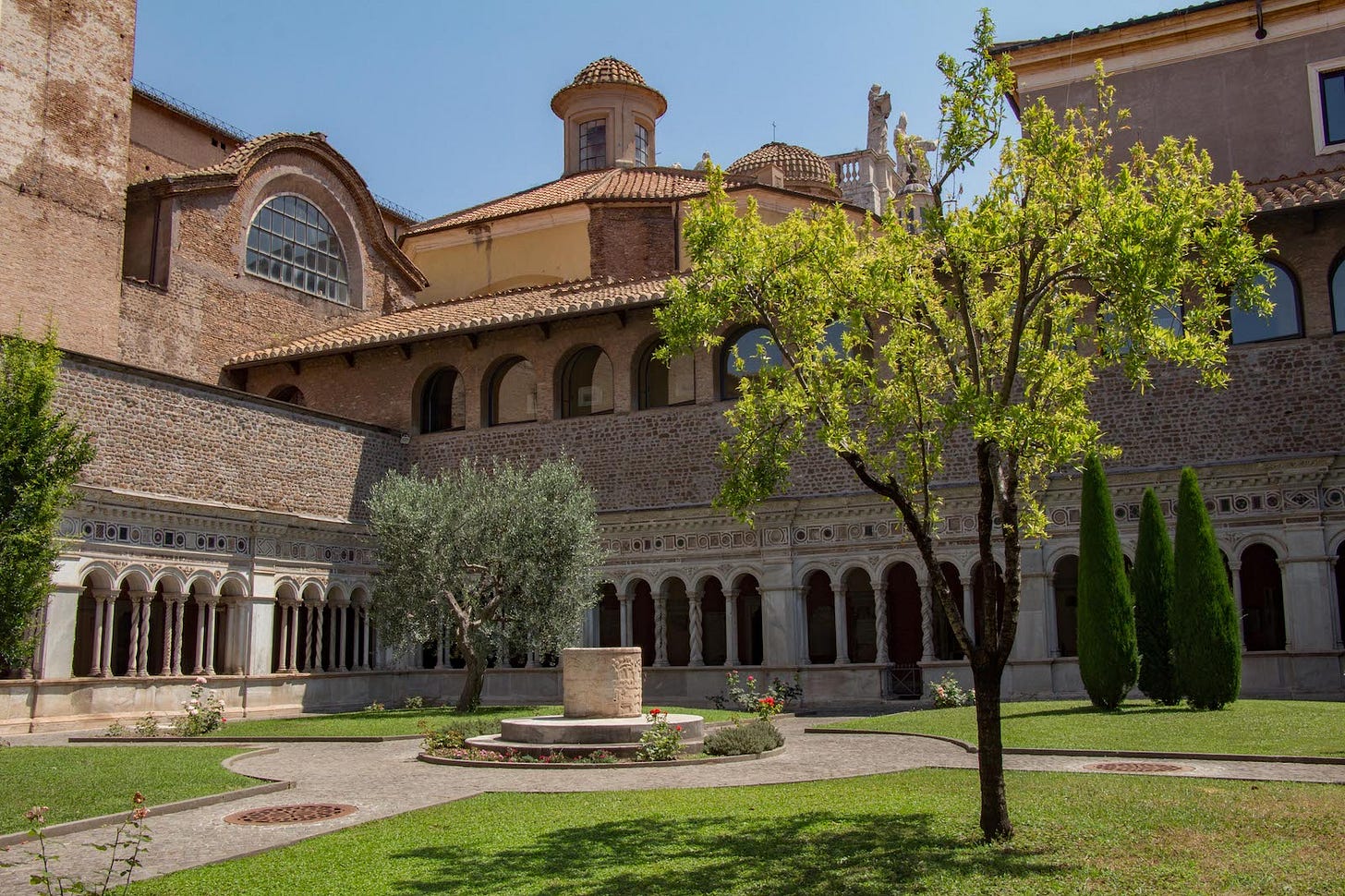
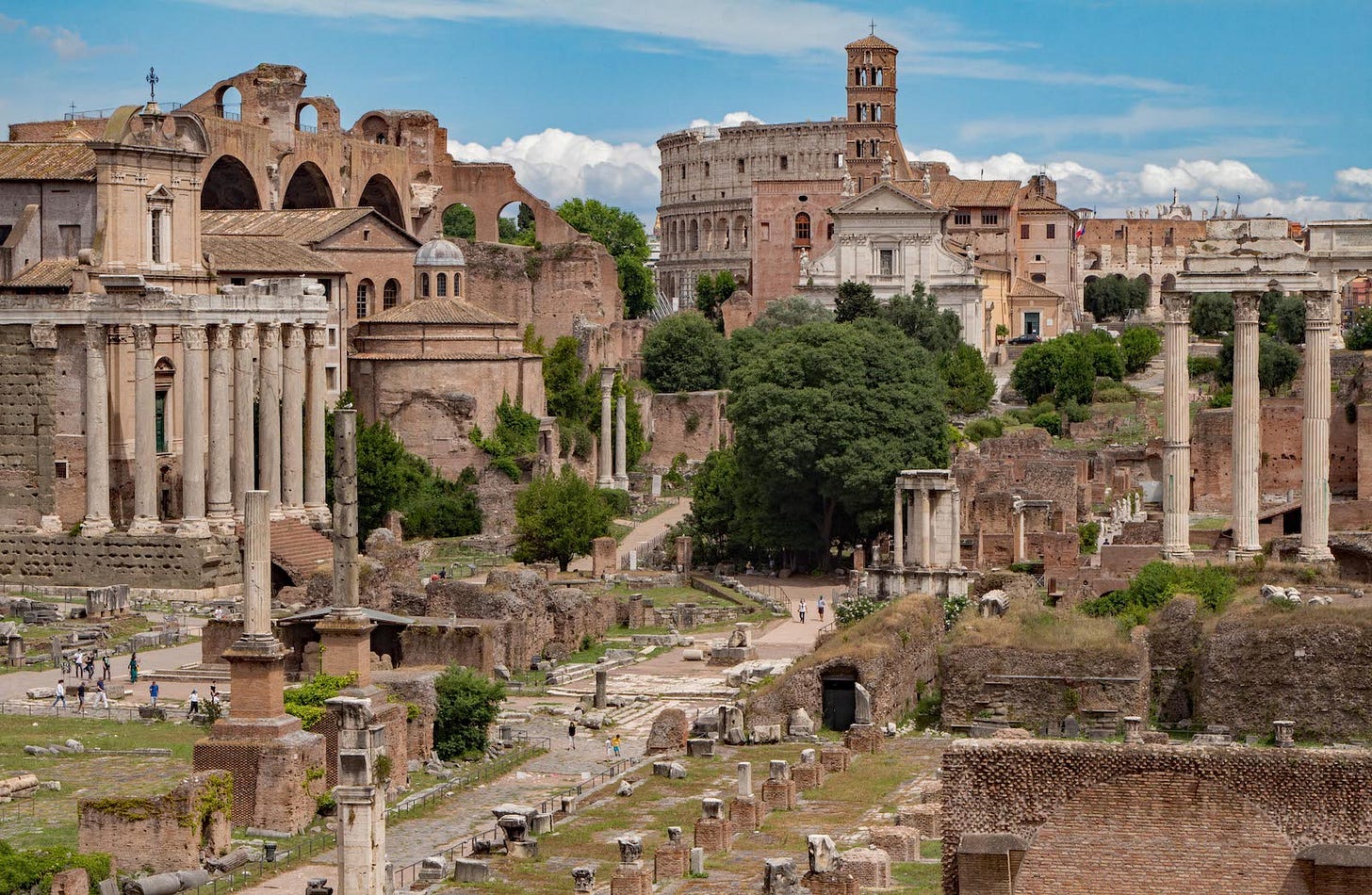

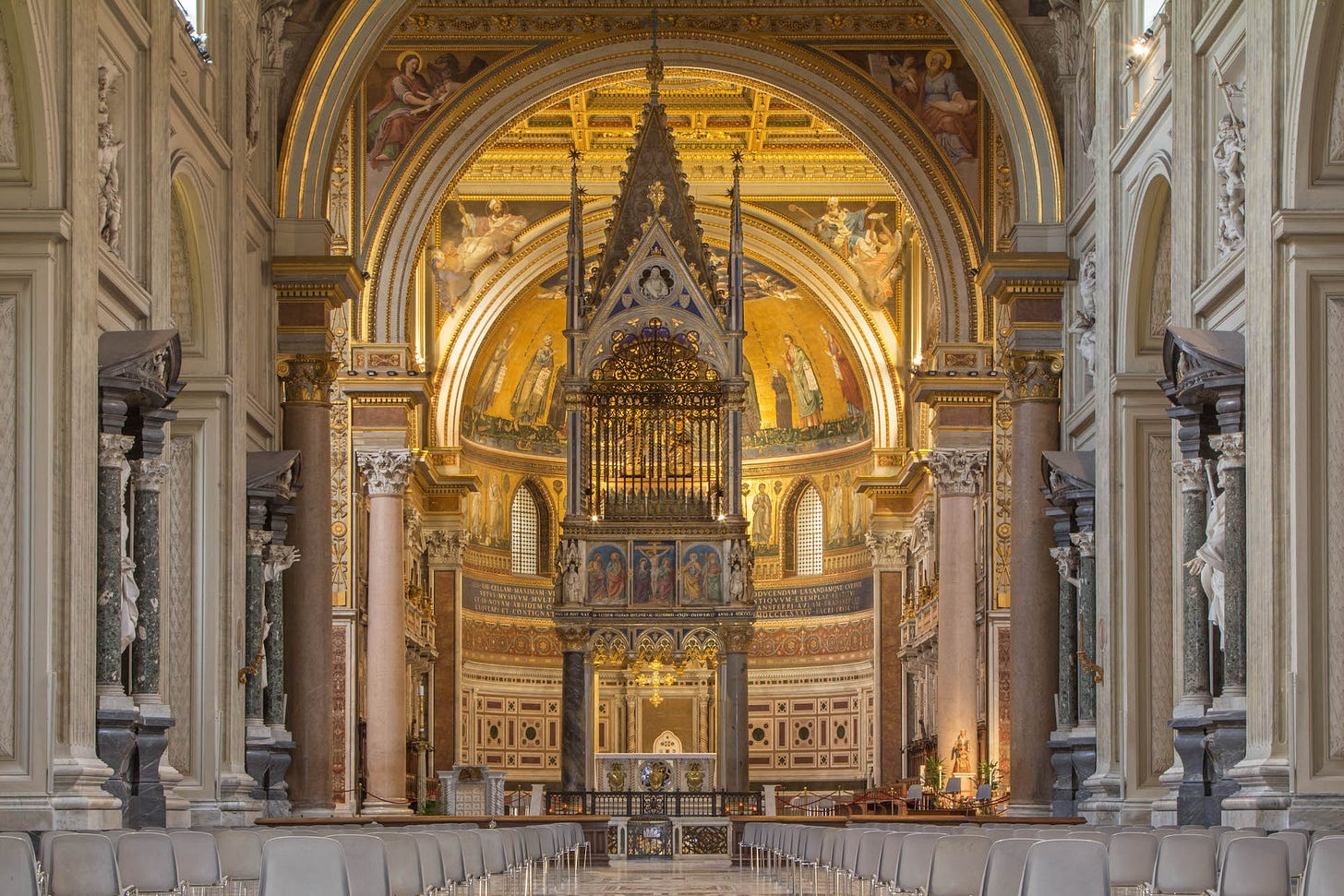
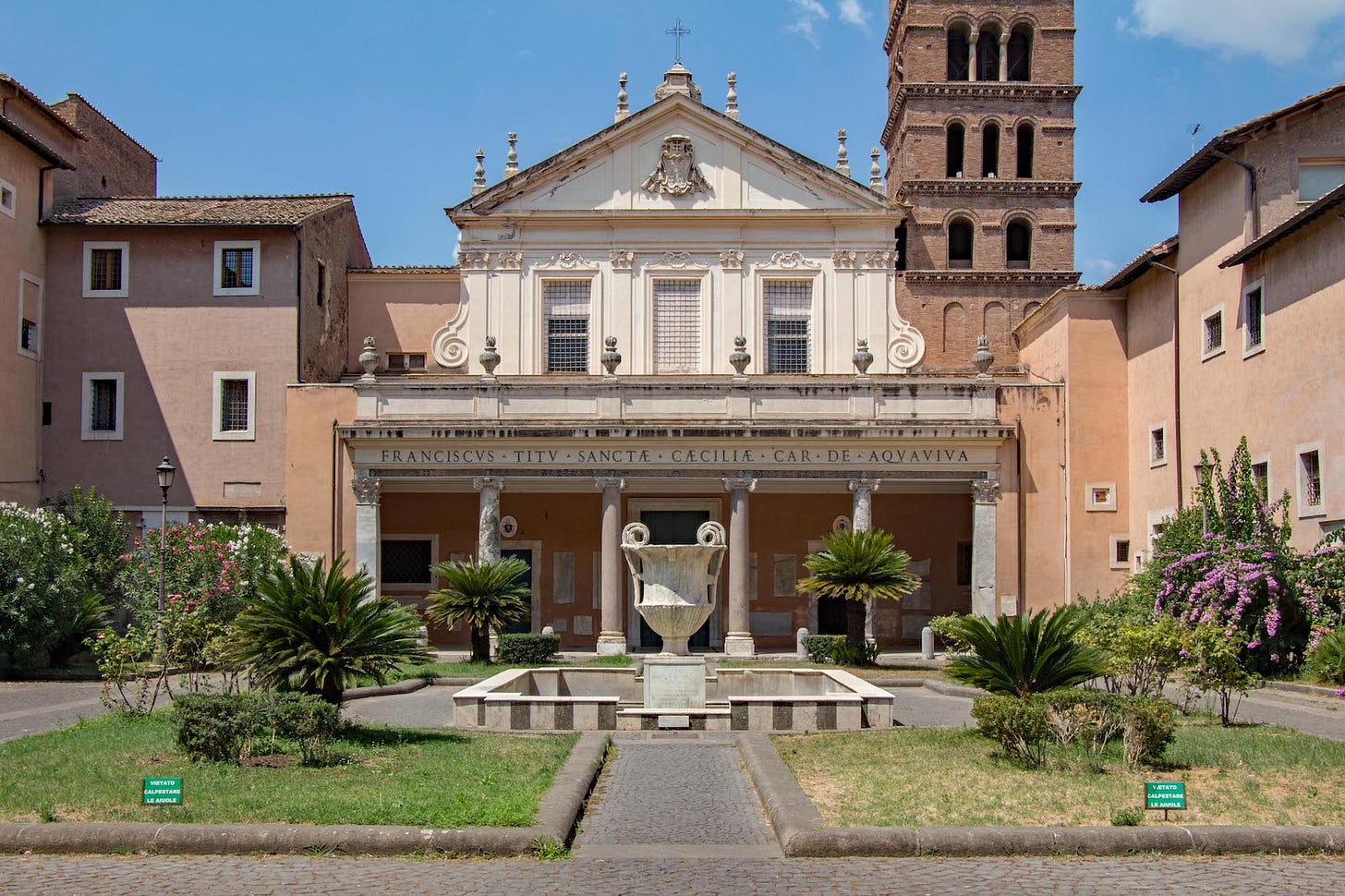

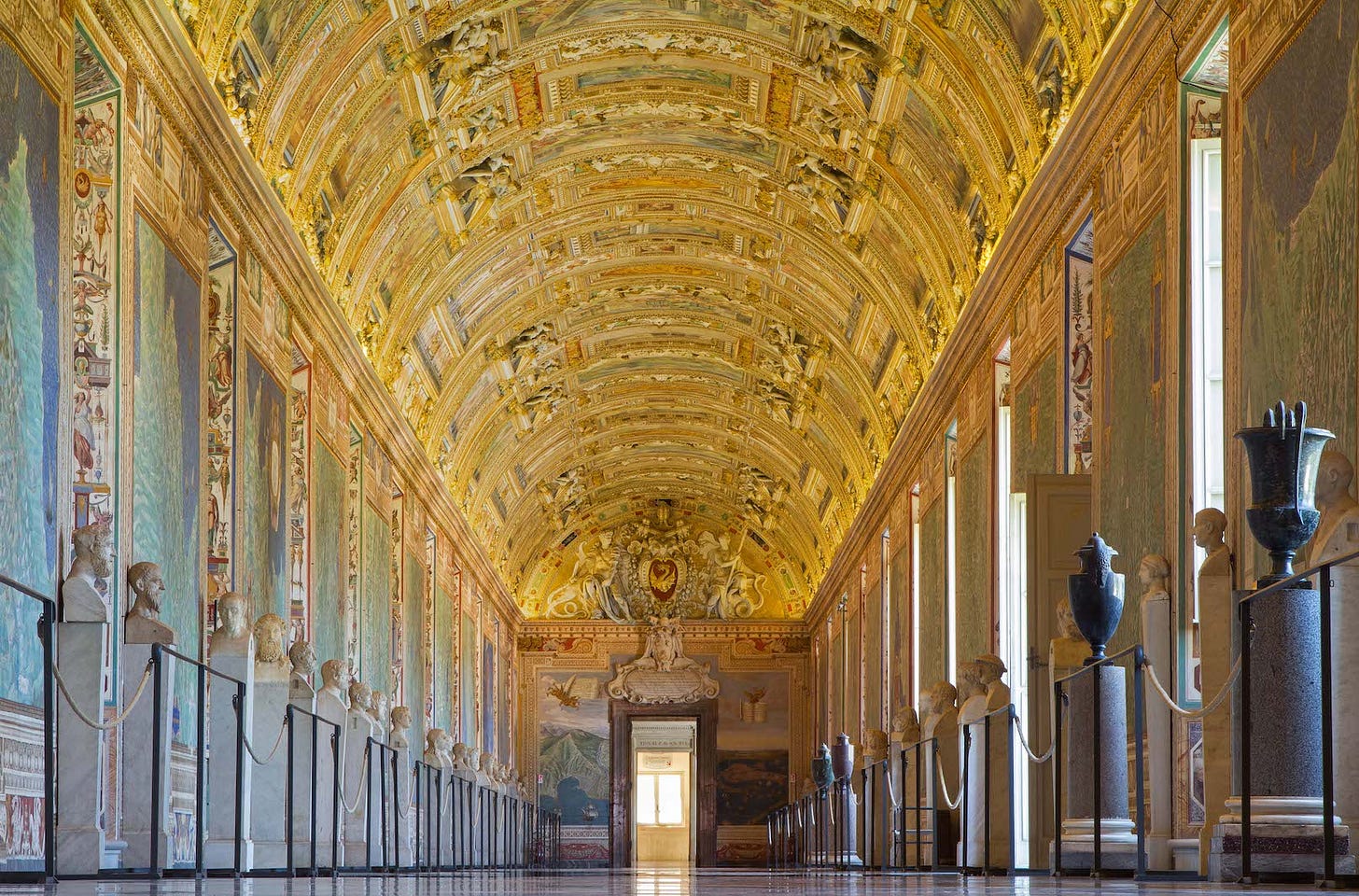
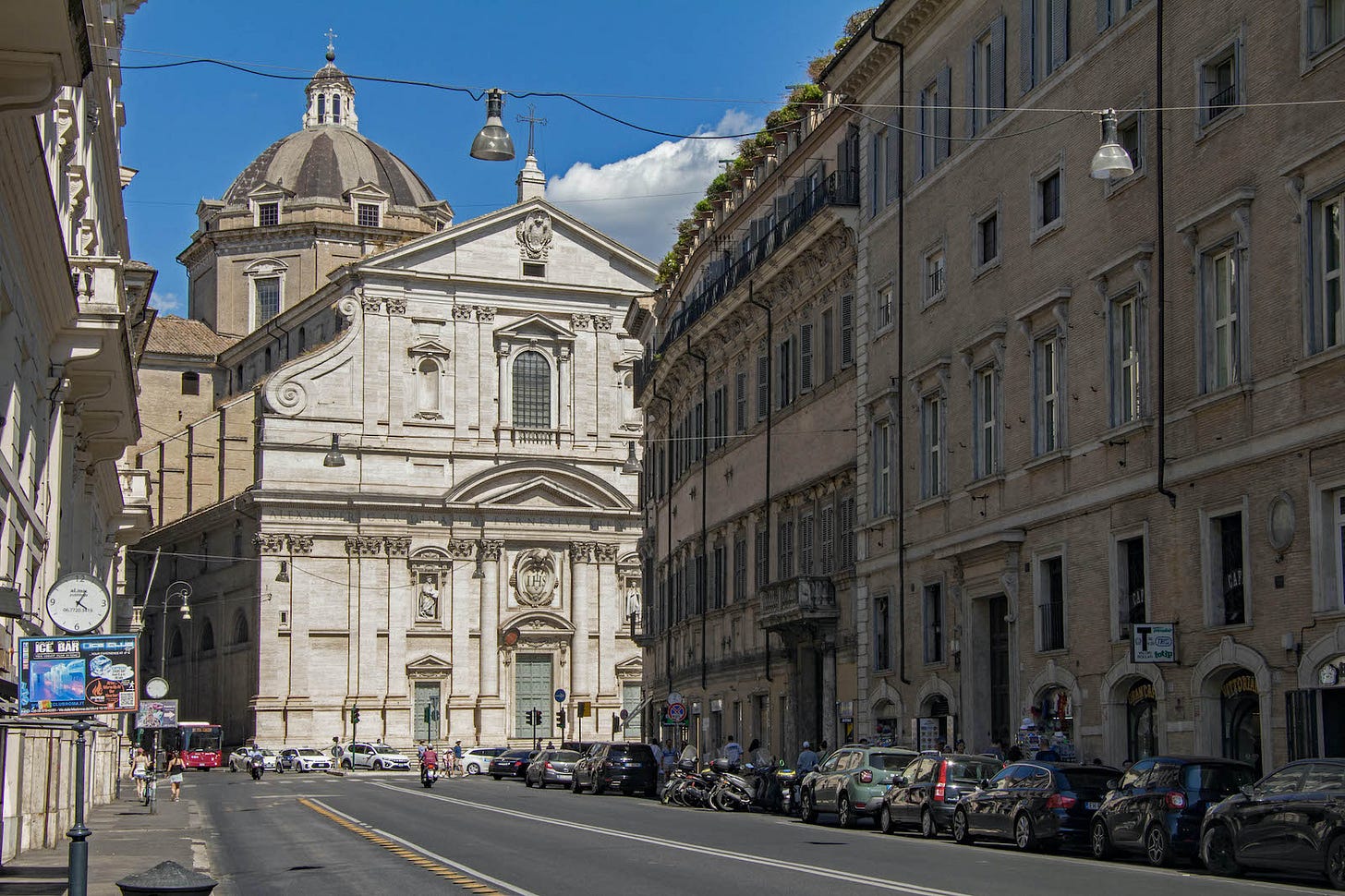
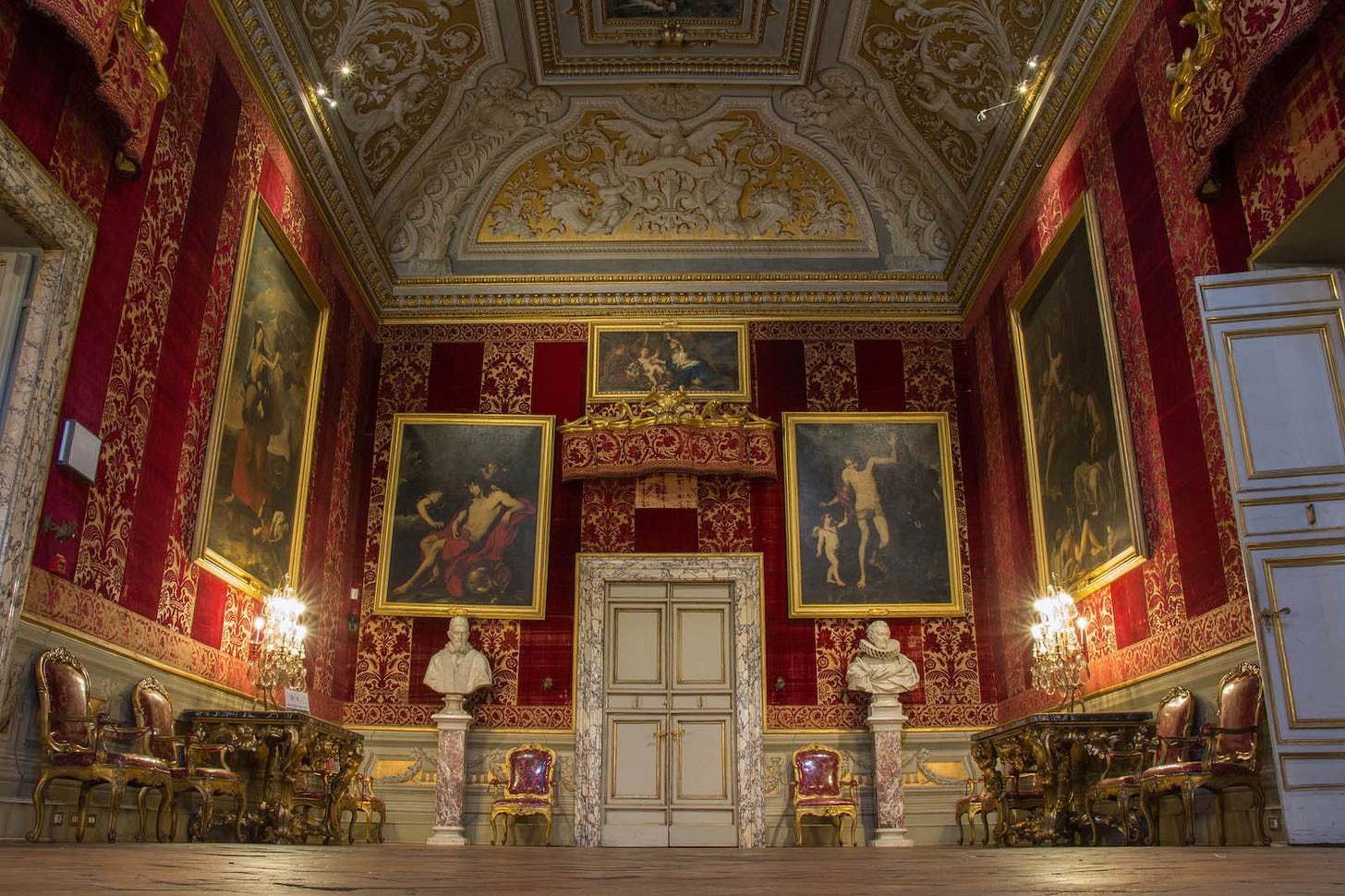

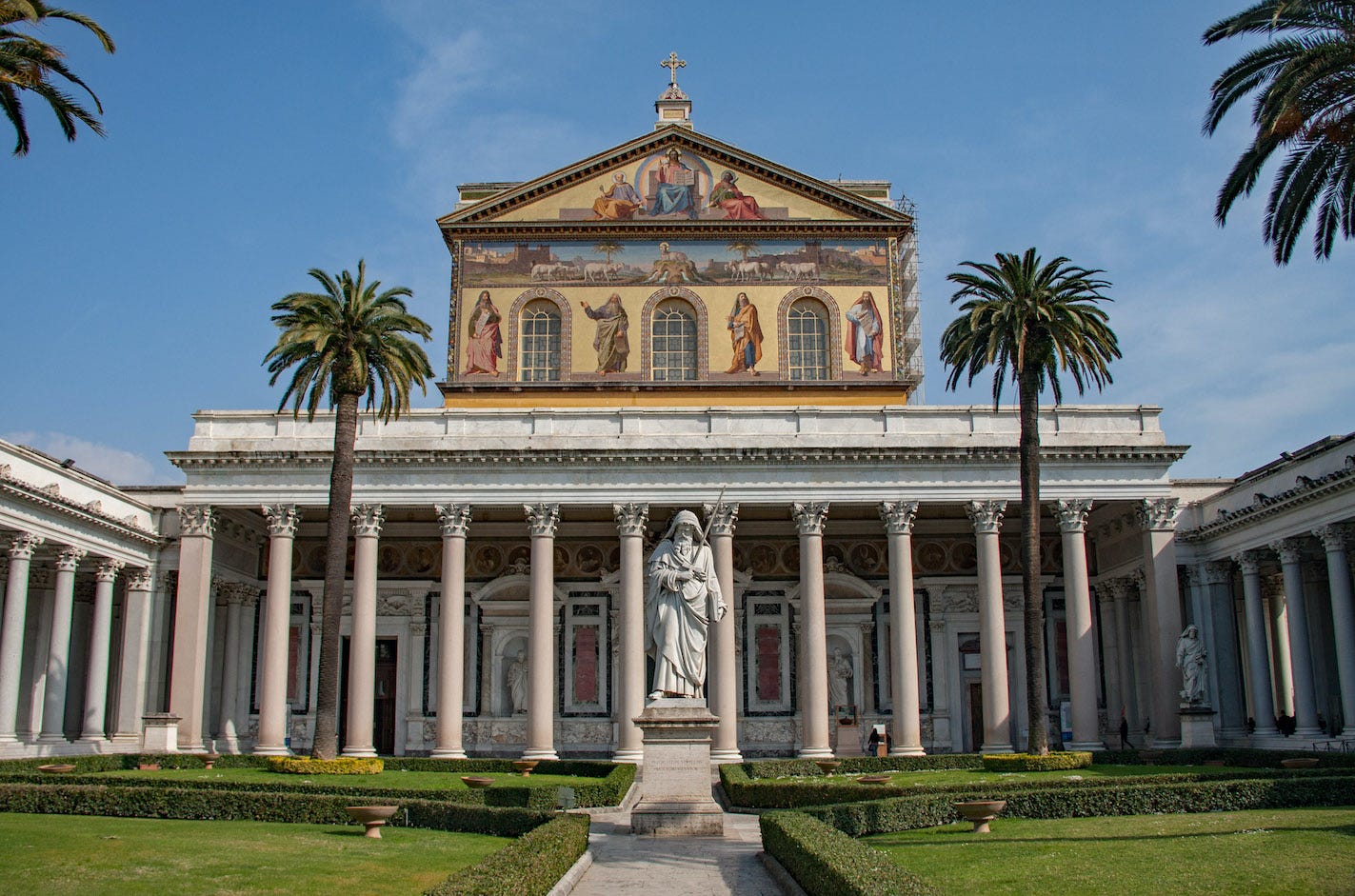
This sounds to have been a wonderful well-organised retreat, especially for any first-time visitors to Rome. I have accompanied James around Italy in general, and Rome in particular, on many occasions and I know that the participants could not have had a more knowledgeable and enthusiastic guide, although as his father I must confess to perhaps a little bias in this opinion! To be told authoritatively about historical events at the site(s) where they actually happened is both an enlightening and a humbling experience. I hope that this becomes a regular event and that in the extremely capable hands of Evan and James it garners the support and patronage that it clearly deserves.